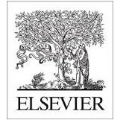This survey provides an analysis of current methodologies integrating legal and logical specifications into the perception, prediction, and planning modules of automated driving systems. We systematically explore techniques ranging from logic-based frameworks to computational legal reasoning approaches, emphasizing their capability to ensure regulatory compliance and interpretability in dynamic and uncertain driving environments. A central finding is that significant challenges arise at the intersection of perceptual reliability, legal compliance, and decision-making justifiability. To systematically analyze these challenges, we introduce a taxonomy categorizing existing approaches by their theoretical foundations, architectural implementations, and validation strategies. We particularly focus on methods that address perceptual uncertainty and incorporate explicit legal norms, facilitating decisions that are both technically robust and legally defensible. The review covers neural-symbolic integration methods for perception, logic-driven rule representation, and norm-aware prediction strategies, all contributing toward transparent and accountable autonomous vehicle operation. We highlight critical open questions and practical trade-offs that must be addressed, offering multidisciplinary insights from engineering, logic, and law to guide future developments in legally compliant autonomous driving systems.
翻译:暂无翻译




